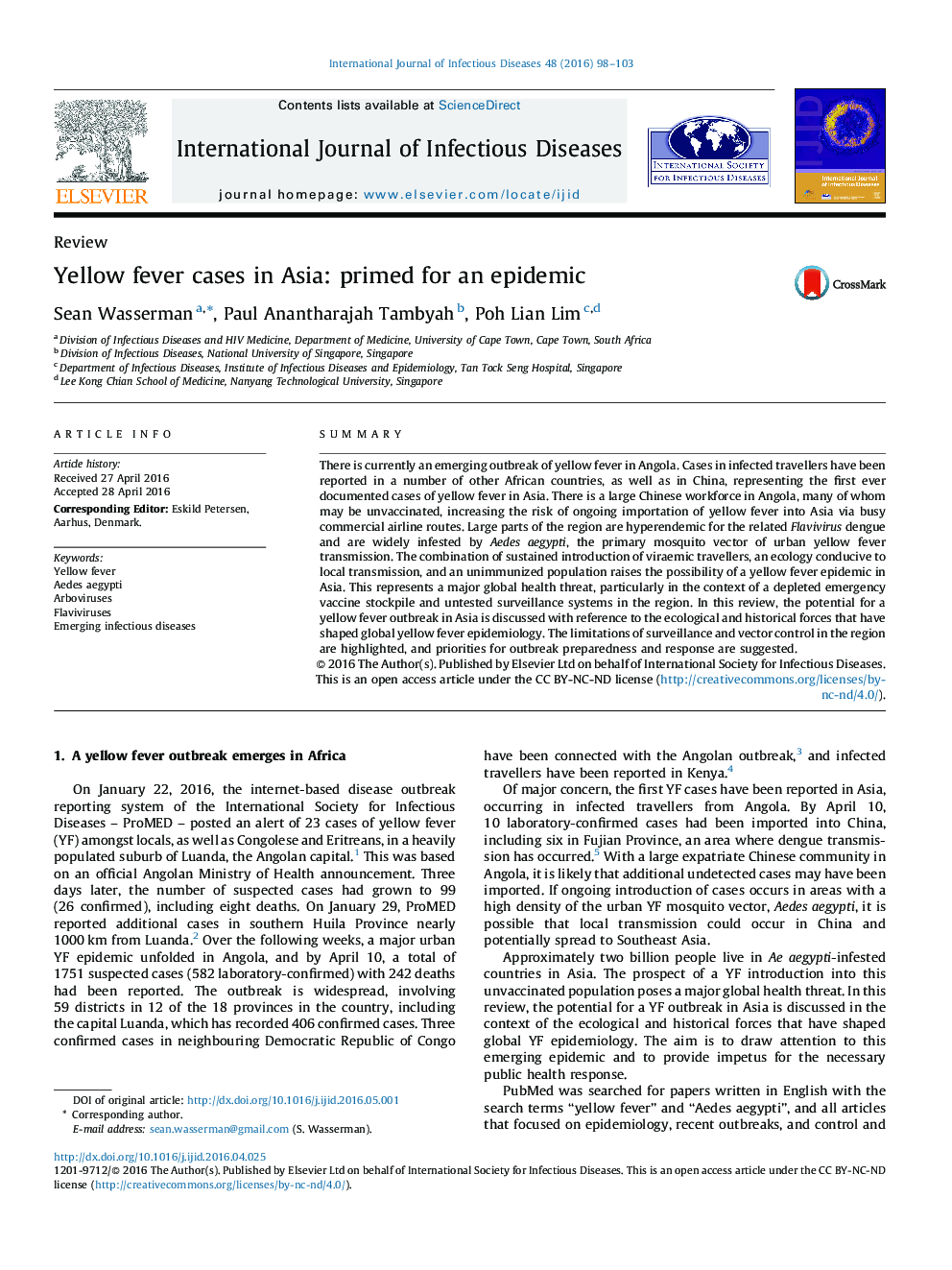| Article ID | Journal | Published Year | Pages | File Type |
|---|---|---|---|---|
| 3361713 | International Journal of Infectious Diseases | 2016 | 6 Pages |
•A large yellow fever epidemic is underway in Angola, from where infected travellers are arriving in China, representing the first ever reported cases in Asia.•There is an abundance of the urban yellow fever vector, Aedes aegypti, in the Asia-Pacific region, raising the possibility of local yellow fever transmission, particularly as the period of peak dengue activity approaches.•The current conditions of a large Chinese expatriate community in Angola, the high volume of air travel from Angola to Asia, a favourable ecology for yellow fever transmission, and a large unimmunized population together represent a global health threat.•Outbreak preparedness and planning needs to be prioritized, and must include enhanced surveillance, vaccination of travellers, stockpiling of additional emergency vaccine, and consideration of administering a reduced vaccine dose as an outbreak response to maximise vaccination coverage.
SummaryThere is currently an emerging outbreak of yellow fever in Angola. Cases in infected travellers have been reported in a number of other African countries, as well as in China, representing the first ever documented cases of yellow fever in Asia. There is a large Chinese workforce in Angola, many of whom may be unvaccinated, increasing the risk of ongoing importation of yellow fever into Asia via busy commercial airline routes. Large parts of the region are hyperendemic for the related Flavivirus dengue and are widely infested by Aedes aegypti, the primary mosquito vector of urban yellow fever transmission. The combination of sustained introduction of viraemic travellers, an ecology conducive to local transmission, and an unimmunized population raises the possibility of a yellow fever epidemic in Asia. This represents a major global health threat, particularly in the context of a depleted emergency vaccine stockpile and untested surveillance systems in the region. In this review, the potential for a yellow fever outbreak in Asia is discussed with reference to the ecological and historical forces that have shaped global yellow fever epidemiology. The limitations of surveillance and vector control in the region are highlighted, and priorities for outbreak preparedness and response are suggested.
